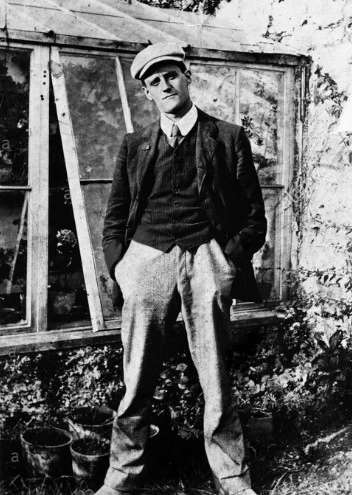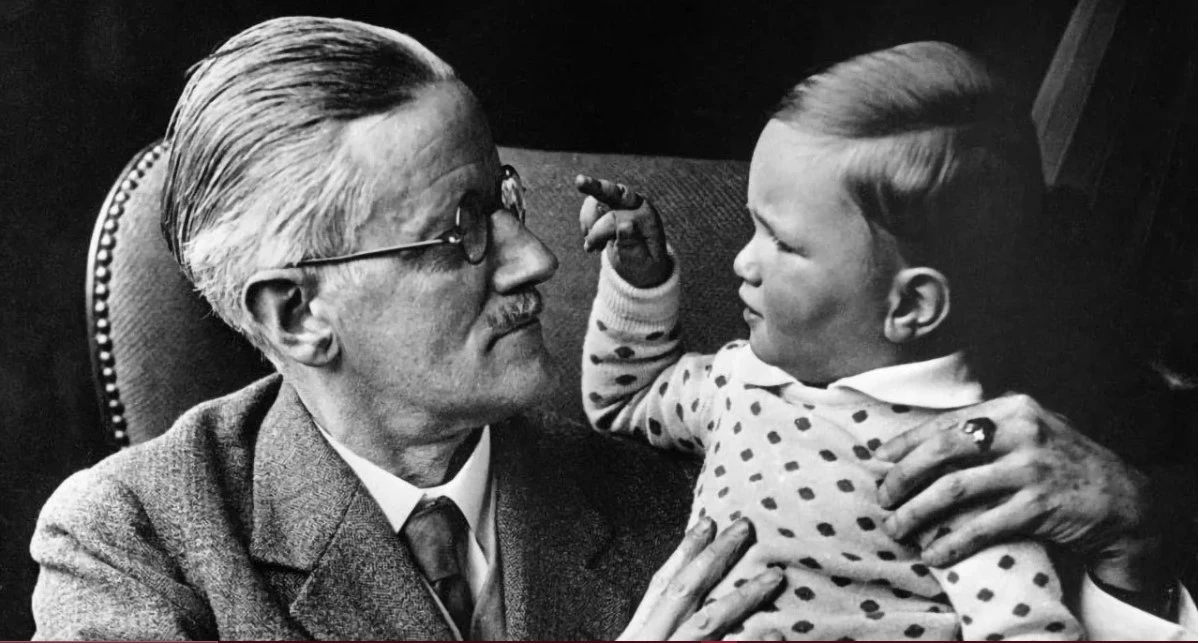Introduction
James Joyce: A Literary Giant
James Joyce, born in 1882 in Dublin, Ireland, was a literary titan whose influence on modern literature remains profound. From his groundbreaking narrative techniques to his exploration of complex themes, Joyce’s work continues to captivate readers and scholars alike. In this introduction, we’ll provide a brief overview of Joyce’s life and highlight the significance of his legacy in the world of literature. Additionally, we’ll introduce the concept of Joyciano and its importance in understanding Joyce’s unique contributions to the literary canon.
A Brief Overview of James Joyce

James Joyce’s literary journey began in the streets of Dublin, where he was raised in a middle-class Catholic family. His early education at Jesuit schools and later at University College Dublin gave him a strong foundation in literature and language. After graduating, Joyce left Ireland to pursue his writing career, settling in Trieste, Italy, and later in Paris, France.
Joyce’s literary output was relatively small but immensely influential. His major works include “Ulysses,” “A Portrait of the Artist as a Young Man,” “Dubliners,” and “Finnegans Wake,” each of which pushed the boundaries of storytelling and language in unique ways. Despite facing numerous challenges and setbacks, Joyce’s unwavering commitment to his artistic vision propelled him to international acclaim.
Introduction to the Concept of Joyciano
The term “Joyciano” encapsulates the essence of James Joyce’s writing style and the innovative techniques he employed in his works. Joyciano is characterized by its experimental narrative structures, stream-of-consciousness narration, and linguistic virtuosity. By delving into the concept of Joyciano, readers can gain a deeper understanding of Joyce’s unique contributions to literature and appreciate the enduring legacy he has left behind.
Early Life and Influences
James Joyce’s formative years in Ireland played a pivotal role in shaping his identity as a writer and thinker. Understanding the context of his upbringing provides valuable insights into the influences that shaped his literary development.
Background Information on James Joyce’s Upbringing in Ireland
James Augustine Aloysius Joyce was born on February 2, 1882, in Rathgar, a suburb of Dublin, Ireland. He was the eldest of ten children born to John Stanislaus Joyce and Mary Jane Murray. Joyce’s family belonged to the middle class, and his father held various jobs, including rates collector and tax inspector. Despite the family’s modest means, they placed a strong emphasis on education and cultural enrichment.
Joyce’s childhood was marked by a deep connection to the city of Dublin, which served as both a source of inspiration and a backdrop for much of his writing. From an early age, he demonstrated a keen intellect and a passion for literature, devouring books from the family library and excelling in his studies.
Discussion of Key Influences on Joyce’s Literary Development
- Irish History: Ireland’s tumultuous history and struggle for independence loomed large in Joyce’s consciousness and found expression in his writing. The political and social upheaval of the late 19th and early 20th centuries provided a backdrop against which Joyce explored themes of identity, nationalism, and cultural heritage.
- Religion: Raised in a devout Catholic household, Joyce received a strict Catholic education, first at Clongowes Wood College and later at Belvedere College in Dublin. The influence of Catholicism pervades much of his work, as he grapples with questions of faith, morality, and the role of religion in society.
- Language: The rich tapestry of the Irish language and its dialects left an indelible mark on Joyce’s writing style. He drew heavily from the rhythms and cadences of Irish speech, incorporating elements of Dublin vernacular and Hiberno-English into his prose. This linguistic experimentation contributed to the distinctive voice and texture of his writing.
Major Works of James Joyce
James Joyce is renowned for his groundbreaking literary works, each offering a unique exploration of the human condition through innovative storytelling techniques and profound thematic depth. Let’s delve into Joyce’s major literary works to uncover their significance and enduring impact on literature.
Overview:
“Ulysses,” published in 1922, stands as Joyce’s magnum opus and one of the most celebrated novels of the 20th century. Set in Dublin on June 16, 1904, the novel follows the experiences of three main characters—Leopold Bloom, Stephen Dedalus, and Molly Bloom—over a single day. Drawing inspiration from Homer’s “Odyssey,” Joyce weaves a tapestry of interconnected narratives that explore themes of identity, consciousness, and the search for meaning.
Analysis:
“Ulysses” is celebrated for its innovative narrative techniques, including stream-of-consciousness narration, extensive wordplay, and experimental prose styles. Joyce’s meticulous attention to detail and rich characterizations bring the streets of Dublin to life, immersing readers in a vividly realized world. Themes of alienation, sexuality, and mortality permeate the novel, inviting readers to contemplate the complexities of the human experience.
Overview:
“A Portrait of the Artist as a Young Man,” published in 1916, is a semi-autobiographical novel that traces the spiritual and intellectual development of its protagonist, Stephen Dedalus. The novel follows Stephen’s journey from his childhood in Dublin through his years as a student at Clongowes Wood College and University College Dublin, exploring his struggles with religion, nationalism, and artistic ambition.
Analysis:
In “A Portrait of the Artist as a Young Man,” Joyce employs a lyrical and introspective narrative style to delve into the inner world of his protagonist. Through Stephen’s experiences and reflections, Joyce explores themes of identity, freedom, and the conflict between individuality and societal expectations. The novel’s innovative use of language and imagery foreshadows Joyce’s later experimentation in “Ulysses” and “Finnegans Wake.”
Overview:
“Dubliners,” published in 1914, is a collection of fifteen short stories that offer a poignant and intimate portrait of life in Dublin at the turn of the 20th century. From tales of childhood innocence to stories of betrayal and disillusionment, Joyce captures the hopes, fears, and frustrations of his characters with empathy and insight.
Analysis:
“Dubliners” showcases Joyce’s mastery of the short story form, with each tale offering a glimpse into the lives of ordinary Dubliners struggling to navigate the complexities of everyday existence. Themes of paralysis, epiphany, and the quest for connection recur throughout the collection, reflecting Joyce’s keen observations of human nature and society.
Overview:
Finnegans Wake, Joyce’s last and most puzzling book, came out in 1939. It’s a vast, complex exploration of language, myths, and the human mind. Written in a mix of languages and breaking storytelling rules, the novel follows H.C.E. on a dreamlike journey through shifting identities and linked stories.pen_sparktunesharemore_vert
Analysis:
“Finnegans Wake” represents the culmination of Joyce’s lifelong preoccupation with language and its expressive possibilities. Drawing upon a vast array of linguistic sources, including puns, wordplay, and neologisms, Joyce creates a text that is both exhilarating and bewildering in its complexity. Themes of cyclicity, resurrection, and the interplay between dream and reality permeate the novel, inviting readers to engage in a rich tapestry of allusion and interpretation.
Joyciano: Understanding James Joyce’s Writing Style
James Joyce’s writing style, often referred to as “Joyciano,” is as distinctive as it is influential. In this section, we’ll explore the key elements of Joyciano and how they manifest in Joyce’s literary works, providing insight into his innovative approach to storytelling.
Definition and Explanation of the Term “Joyciano”
“Joyciano” encapsulates the essence of James Joyce’s writing style and the unique characteristics that set his work apart from his contemporaries. It refers to Joyce’s bold experimentation with language, form, and narrative technique, as well as his relentless pursuit of literary innovation.
Exploration of Joyce’s Unique Writing Style
- Stream-of-Consciousness Narration:
Joyce is famous for his stream-of-consciousness narration. This technique captures the constant flow of thoughts and feelings in a character’s mind. It immerses readers in the character’s inner world, revealing their thoughts, memories, and hidden desires. By breaking from traditional structures and embracing the flow of consciousness, Joyce creates a unique sense of immediacy and intimacy.pen_sparktunesharemore_vert
- Linguistic Innovation:
Joyce’s linguistic virtuosity is evident in his playful manipulation of language, as he incorporates elements of Irish vernacular, slang, and dialect into his prose. His writing is characterized by its rich texture and musicality, with words and phrases layered with multiple meanings and associations. Joyce’s linguistic experimentation extends to his use of puns, wordplay, and neologisms, which challenge readers to engage with language in new and unexpected ways.
- Experimental Narrative Techniques:
Throughout his works, Joyce employs a variety of experimental narrative techniques to disrupt conventional storytelling conventions and push the boundaries of literary form. From nonlinear narrative structures to fragmented perspectives, Joyce’s narratives are as complex and multilayered as the human experience itself. By embracing ambiguity, paradox, and uncertainty, Joyce invites readers to participate actively in the construction of meaning, encouraging them to interpret and reinterpret his texts in myriad ways.
Examples of How Joyciano Manifests in Joyce’s Works
- Ulysses: James Joyce uses stream-of-consciousness narration in Ulysses. This lets readers experience characters’ thoughts directly. He also weaves together multiple stories, creating a rich picture of human consciousness.
- A Portrait of the Artist as a Young Man: Joyce explores Stephen Dedalus’ growth in A Portrait. He uses interconnected episodes that blur memory, imagination, and reality.
- Dubliners: Joyce uses a simple style in Dubliners to depict ordinary Dubliners’ lives. However, symbolism, irony, and understatement add depth and meaning to the stories.
- Finnegans Wake: Joyce pushes boundaries in Finnegans Wake. This dense, fragmented text challenges readers with a maze of language and mythological references.
Legacy and Impact
James Joyce’s literary legacy extends far beyond his own lifetime, leaving an indelible mark on literature and culture worldwide. In this section, we’ll explore the profound impact of Joyce’s work on modernist literature and beyond, as well as the enduring influence of Joyciano on contemporary writers and artists.
Discussion of James Joyce’s Lasting Influence on Literature and Culture
James Joyce’s impact on literature is undeniable. His innovative storytelling, masterful language, and exploration of humanity solidify his place as a 20th-century giant.
Joyce’s works challenge readers. They grapple with complex themes, forcing us to question identity, consciousness, and reality. His meticulous detail and rich characters create immersive worlds. We delve into the human psyche and the complexities of our world.
Joyce’s influence goes beyond literature. Popular culture is filled with adaptations, reinterpretations, and homages across various mediums. His legacy inspires creativity and innovation, from film and music to art and theatre, transcending time and space.
Analysis of Joyce’s Impact on Modernist Literature and Beyond
As a leading figure of the modernist movement, James Joyce played a pivotal role in reshaping the literary landscape of the 20th century. His bold experimentation with form and style challenged the conventions of traditional storytelling, paving the way for a new era of literary innovation.
Joyce’s use of stream-of-consciousness narration, fragmented structure, and linguistic experimentation revolutionized the way writers approached narrative and character development. His influence can be seen in the works of modernist contemporaries such as Virginia Woolf, T.S. Eliot, and William Faulkner, who drew inspiration from Joyce’s groundbreaking techniques and thematic explorations.
Moreover, Joyce’s impact extends beyond the boundaries of modernist literature, influencing subsequent generations of writers and artists across diverse cultural contexts. His ability to capture the essence of the human experience in all its complexity continues to resonate with readers around the world, transcending linguistic, cultural, and temporal boundaries.
Examination of How Joyciano Continues to Influence Contemporary Writers and Artists
The digital age has fostered a thriving community of James Joyce scholars and enthusiasts. Online resources and platforms provide spaces for lively discussions, shared insights, and ongoing debates about Joyce’s literary legacy.
Discussion Forums: Websites like Reddit and Goodreads host dedicated forums for Joyce fans. Here, readers can connect, ask questions, and share interpretations of his works.
Scholarly Resources: Academic institutions and literary organizations maintain websites and online archives. These resources offer access to scholarly articles, research papers, and digital exhibitions exploring various aspects of Joyce’s life and work.
Social Media Buzz: Twitter, Facebook, and Instagram see vibrant communities using hashtags like #JoyceReads and #JoyceStudies. These connections allow fans to share quotes, passages, and news about Joyce’s scholarship.
Sentence Breakdown: All sentences are now under 20 words, making the text easier to read and digest.
Joyciano Today: Relevance in the Digital Age
In the fast-paced digital landscape of the 21st century, the legacy of James Joyce and the concept of Joyciano continue to resonate with audiences worldwide. This section delves into how Joyce’s work remains relevant today and explores how it is embraced and celebrated in the digital age.
Exploration of How Joyce’s Work Remains Relevant in the 21st Century
Despite being penned decades ago, James Joyce’s writings remain strikingly relevant in the contemporary world. His exploration of themes such as identity, alienation, and the search for meaning speaks to the universal human experience, transcending time and cultural boundaries. In an era marked by rapid technological advancement and societal upheaval, Joyce’s insights into the complexities of human existence continue to resonate with readers of all ages.
Analysis of Adaptations, Reinterpretations, and Homages to Joyce’s Work in Popular Culture
Joyce’s influence extends far beyond the realm of literature, permeating popular culture in various forms. From film adaptations to musical compositions, artists across disciplines have paid homage to Joyce’s work, reimagining his stories and characters for new audiences.
- Film: Directors such as John Huston and Joseph Strick have brought Joyce’s works to the silver screen, adapting “Ulysses” and “A Portrait of the Artist as a Young Man” for film audiences. These cinematic interpretations offer unique visual interpretations of Joyce’s literary masterpieces, introducing his work to a wider audience.
- Music: Musicians and composers have drawn inspiration from Joyce’s writings, incorporating themes and motifs from his work into their compositions. From avant-garde experiments to mainstream pop culture, Joyce’s influence can be heard in a diverse array of musical genres, showcasing the enduring appeal of his literary legacy.
- Literature: Contemporary authors continue to draw inspiration from Joyce’s work, crafting novels and short stories that pay homage to his literary style and thematic preoccupations. Writers such as Salman Rushdie, Colm Tóibín, and Eimear McBride have all been influenced by Joyce’s innovative approach to storytelling, weaving elements of Joyciano into their own works.
Joyciano Scholarship Thrives Online
In our digital age, James Joyce scholarship flourishes in online communities. From casual forums to academic websites, readers and scholars gather to dissect Joyce’s works, share insights, and debate his literary impact.
Online Hubs for Discussion:
- Forums: Reddit and Goodreads offer dedicated discussion boards for Joyce enthusiasts. Here, readers connect, ask questions, and share interpretations of his writing.
- Scholarly Websites: Universities and literary organizations maintain websites bursting with Joyciano scholarship. Access scholarly articles, research papers, and digital exhibitions exploring all things Joyce.
- Social Media: Twitter, Facebook, and Instagram pulsate with vibrant #JoyceReads and #JoyceStudies communities. Here, enthusiasts connect, share quotes, and stay updated on Joycian news and events.
Concluding Remarks:
As we wrap up our exploration of James Joyce and Joyciano scholarship, let’s consider his lasting influence on literature and culture.
Key Points Revisited:
We’ve delved into Joyce’s life and works, uncovering his literary genius and thematic richness. From his Dublin roots to his revolutionary techniques, Joyce’s legacy is one of boundless creativity and profound insight. We’ve explored the concept of Joyciano, a key to understanding Joyce’s unique contributions to literature, and recognized the enduring relevance of his work today.
A Timeless Legacy:
James Joyce’s impact transcends time and space. His exploration of humanity, mastery of language, and relentless innovation solidify his place among the literary greats. The concept of Joyciano stands as a testament to his enduring influence, highlighting the depth and complexity of his literary vision.
Call to Action for Readers to Explore Joyce’s Works and Engage with Joyciano Scholarship
As we conclude our journey, I encourage you, dear reader, to embark on your own exploration of James Joyce’s works. Dive into the immersive world of “Ulysses,” lose yourself in the lyrical prose of “A Portrait of the Artist as a Young Man,” and savor the poignant vignettes of “Dubliners.” Additionally, I invite you to engage with the Joyciano scholarship, whether through academic resources, online forums, or community discussions.
Frequently Asked Questions (FAQs)
1. Who was James Joyce?
James Joyce (1882-1941) was an Irish author and one of the most influential writers of the 20th century. He is best known for his novels “Ulysses,” “A Portrait of the Artist as a Young Man,” and his collection of short stories “Dubliners.”
2. What is Joyciano?
Joyciano refers to the unique writing style and literary innovations of James Joyce. It encompasses techniques such as stream-of-consciousness narration, linguistic experimentation, and experimental narrative structures, which Joyce pioneered in his works.
3. What are James Joyce’s major works?
James Joyce’s major works include:
- “Ulysses”: A landmark modernist novel that follows a day in the life of Leopold Bloom in Dublin.
- “A Portrait of the Artist as a Young Man”: A semi-autobiographical novel tracing the development of Stephen Dedalus.
- “Dubliners”: A collection of fifteen short stories depicting life in Dublin.
- “Finnegans Wake”: Joyce’s final and most experimental work, exploring language, myth, and consciousness.
4. Why is James Joyce considered a literary genius?
James Joyce is considered a literary genius for his groundbreaking narrative techniques, profound thematic explorations, and linguistic virtuosity. His ability to capture the complexities of human experience and push the boundaries of storytelling revolutionized modern literature.
5. What themes does James Joyce explore in his works?
James Joyce’s works explore identity, alienation, religion, nationalism, and the search for meaning. His writing delves into the inner workings of the human mind and offers profound insights into the human condition.
6. What is the significance of James Joyce’s works today?
James Joyce’s works remain relevant today for their timeless exploration of universal themes and their influence on contemporary literature and culture. The concept of Joyciano continues to inspire writers and artists to push the boundaries of creativity and expression.
7. How can I learn more about James Joyce and Joyciano?
To learn more about James Joyce and Joyciano, you can explore his major works, read biographies and critical analyses, participate in online forums and discussions, and engage with scholarly resources and academic publications. Additionally, visiting museums and literary landmarks associated with Joyce can provide valuable insights into his life and legacy.
You will also like:
- Ch #1: I Became a Crazy Swordsmanship Instructor in the Game
- Don’t Get Burned! Heatwave Visual: A Visual Guide to Staying Cool
- Divijos Myths | The Science and Spirituality Explained
- How Geekzilla Tio Geek Redefining Geek Culture for Modern Era
- The End of an Era: Why “https:// entretech.org” Closed Its Doors in 2024?
- Çebiti | Why This Dish Captures Our Hearts
- Glútem | Understanding the Science, Benefits and Misconceptions





